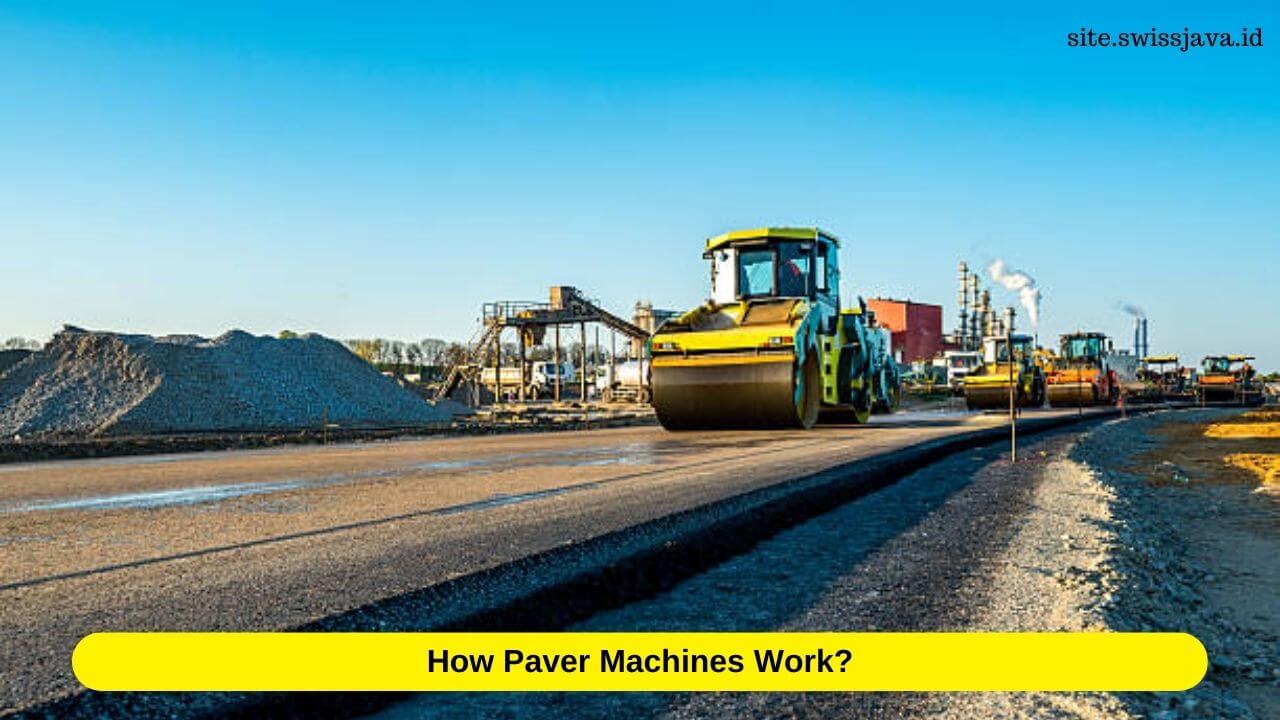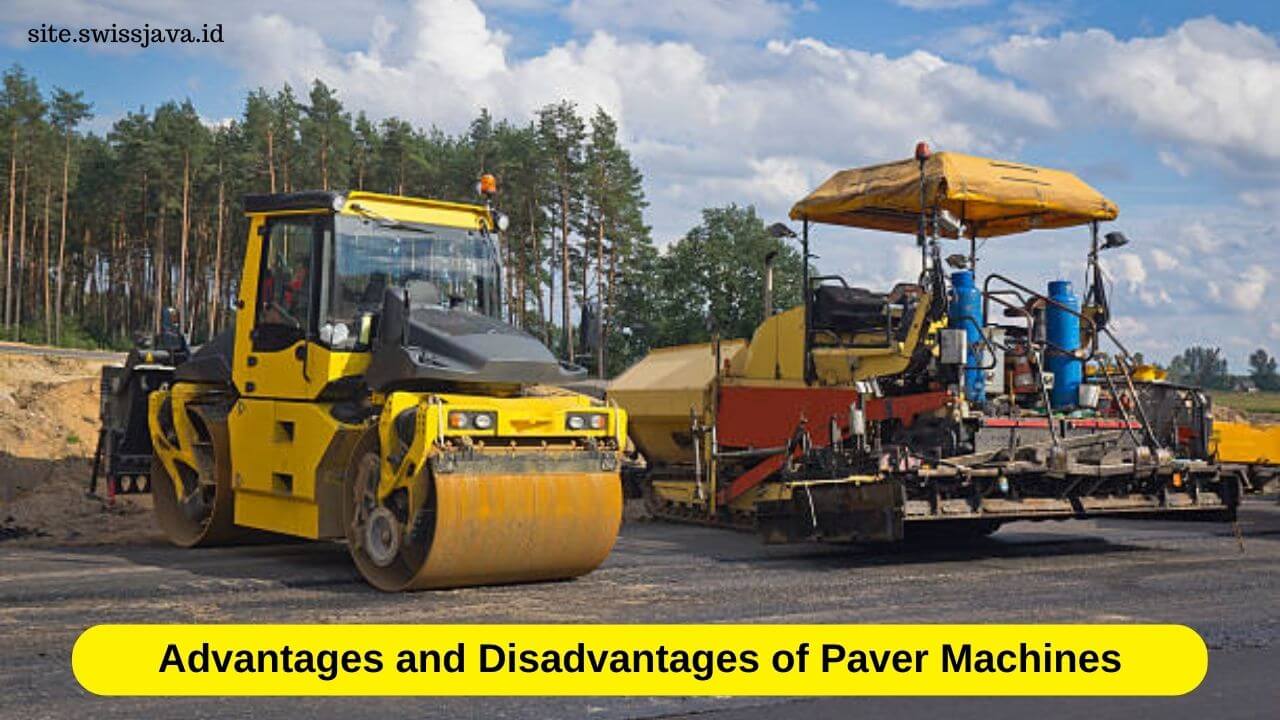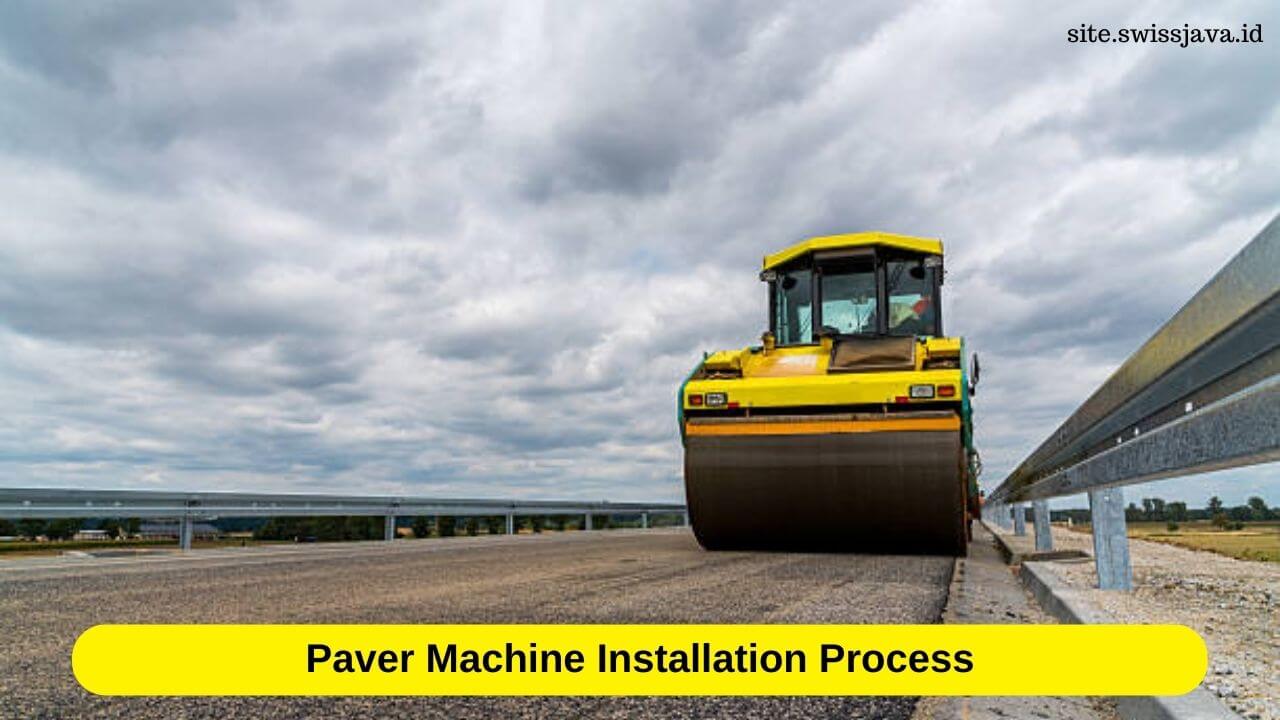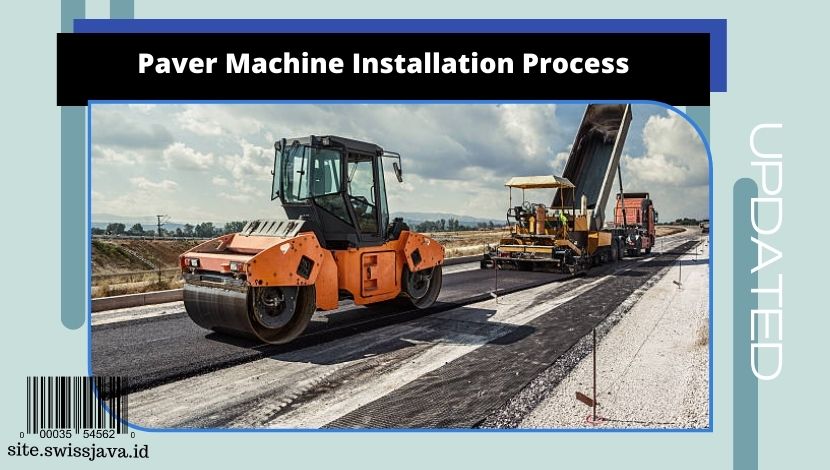Paver Machine Installation Process – Paver machines are essential equipment used in road construction and pavement projects to lay asphalt or concrete surfaces smoothly and precisely.
These machines come in various types, including asphalt pavers and concrete pavers, each designed to cater to specific paving needs.
Paver machines are equipped with adjustable screeds that help control the thickness and smoothness of the laid material, ensuring uniform and high-quality results.
They are typically self-propelled and feature precise controls, allowing operators to achieve accurate paving patterns and maintain proper alignment.
Paver machines are known for their efficiency, speed, and ability to handle both small and large-scale paving projects, contributing to the development and maintenance of modern road infrastructure.
How Paver Machines Work?

Paver machines are complex pieces of equipment used in road construction and pavement projects to lay asphalt or concrete surfaces smoothly and accurately.
The process of how paver machines work can be summarized in the following steps:
1. Material Loading
The paver machine is typically fed with asphalt mix or concrete from a material transfer vehicle (MTV) or a dump truck.
The material is stored in the paver’s hopper, which has a capacity that varies depending on the machine’s size and model.
2. Material Distribution
The paver’s conveyor system moves the material from the hopper to the front of the machine.
The conveyor distributes the material evenly across the width of the paver, preparing it for the paving process.
3. Screeding
The screed is a critical component of the paver machine. It is located at the rear and levels the material to the desired thickness and width.
The screed can be either fixed or extendable, allowing the paver to pave different widths based on project requirements.
4. Compaction
As the paver moves forward, the material is compacted by a series of heavy rollers or a tamper bar screed.
The compaction process ensures the pavement has sufficient density and strength.
5. Augers and Vibrators
Some paver machines are equipped with augers and vibrators, which help to further consolidate the material and remove any voids, ensuring a smooth and even surface.
6. Grade and Slope Control
Paver machines are equipped with advanced control systems that use sensors to monitor the pavement’s grade and slope continuously.
These systems automatically adjust the screed’s height to maintain the correct level and slope of the pavement as the paver moves along the construction site.
7. Finish Rolling
After the initial compaction and surface leveling, a final finish rolling is often performed using heavy asphalt rollers to achieve the desired smoothness and compaction density.
8. Joint Formation
If the pavement is laid in sections, the paver creates defined joints between adjacent sections to accommodate expansion and contraction.
9. Operator Control
The entire process is controlled by the operator from the machine’s cabin, using a combination of manual controls and automated settings on the paver’s control panel.
Advantages and Disadvantages of Paver Machines

Paver machines offer numerous advantages in road construction and pavement projects, but they also come with some limitations.
Here are the key advantages and disadvantages of using paver machines:
| Advantage | Disadvantages |
| Paver machines can lay asphalt or concrete surfaces quickly and efficiently, significantly speeding up the construction process compared to manual methods | Paver machines represent a significant upfront investment, making them less practical for small-scale or occasional paving projects |
| Paver machines are equipped with advanced control systems and leveling technology, ensuring precise and uniform pavement thickness, grade, and slope, resulting in a smoother and more even surface | Paver machines require regular maintenance to ensure optimal performance and prevent breakdowns, adding to the overall operating costs |
| The controlled material distribution, compaction, and finishing processes provided by paver machines lead to high-quality, durable pavements that can withstand heavy traffic and weather conditions | Operating a paver machine requires skilled and trained operators. Inexperienced or untrained operators can result in improper pavement installation and potential delays |
| If the pavement is laid in sections, the paver creates defined joints between adjacent sections to accommodate expansion and contraction | Paver machines might face challenges when accessing confined or narrow construction sites, where their size and weight can be a limitation |
Read More: 8+ Articulated Dump Truck Terrain Adaptability You Should Know
Paver Machine Installation Process
The installation process for a paver machine involves several key steps to ensure its proper setup and functionality.
Below are the typical steps involved in installing a paver machine:
1. Site Preparation
The first step is to prepare the installation site. The area should be level and stable to provide a solid foundation for the paver machine.
Any debris, rocks, or obstacles should be cleared to avoid interference during the installation process.
2. Unloading and Positioning
The paver machine is delivered to the site using heavy equipment or a transport truck.
It is carefully unloaded and positioned in the designated installation area using cranes or forklifts.
3. Anchoring and Leveling
To secure the paver machine in place, it is anchored to the ground using bolts or other appropriate fasteners.
The machine must be leveled accurately to ensure proper operation and prevent any tilting or instability.
4. Connection and Calibration
Depending on the type of paver machine, it needs to be connected to power sources, hydraulic systems, and control panels.
All connections are thoroughly checked for accuracy and safety.
Calibration is also performed to set the paver machine to the desired specifications and performance standards.
5. Testing and Commissioning
Once the installation is complete, the paver machine undergoes rigorous testing and commissioning.
This involves running the machine through its various functions and checking for any mechanical or operational issues.
The control systems are also calibrated to ensure precise paving results.
6. Operator Training
Training is provided to the machine operators to familiarize them with the paver’s controls, safety procedures, and maintenance requirements.
Skilled operators are crucial for achieving optimal paving results and prolonging the machine’s lifespan.
7. Final Inspection and Handover
A final inspection is conducted to ensure that all aspects of the paver machine installation comply with safety standards and quality requirements.
After successful completion of the inspection, the paver machine is handed over to the client or project manager for operational use.
Throughout the installation process, it is essential to follow the manufacturer’s guidelines and specifications to ensure the paver machine’s efficiency, safety, and longevity in construction projects.
Regular maintenance and adherence to safety protocols are also necessary for smooth and trouble-free operation of the paver machine.
Conclusion
In conclusion, paver machines are indispensable tools in the construction industry, revolutionizing the process of laying asphalt and concrete surfaces.
Their advanced technology, precision control, and efficient material handling capabilities ensure high-quality pavements that withstand heavy use and varying weather conditions.
While their initial investment and maintenance costs can be significant, the benefits of increased productivity, uniform paving results, and reduced labor make them a cost-effective choice for large-scale projects.
Skilled operators are crucial for optimizing their performance, making paver machines a valuable asset in building modern, safe, and durable road infrastructure to meet society’s transportation needs.
